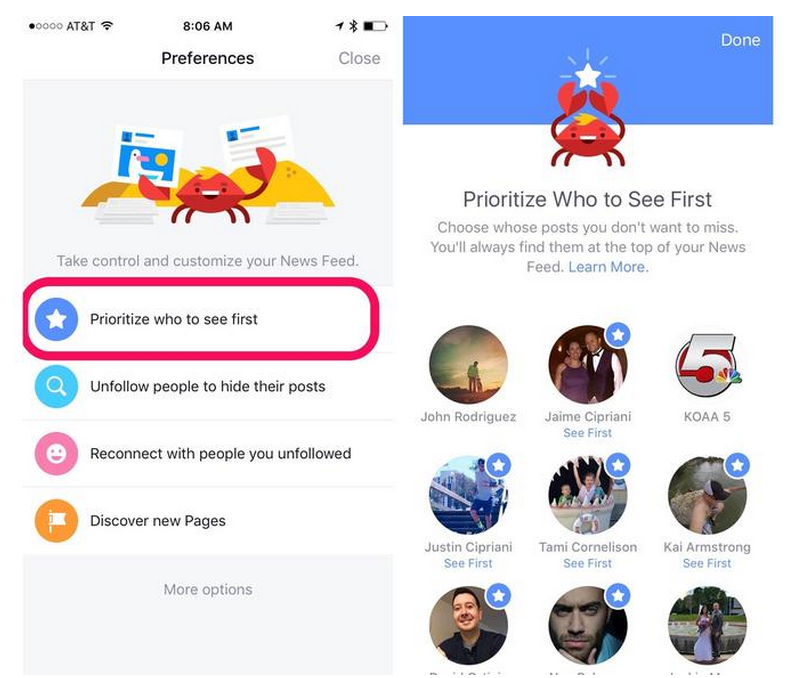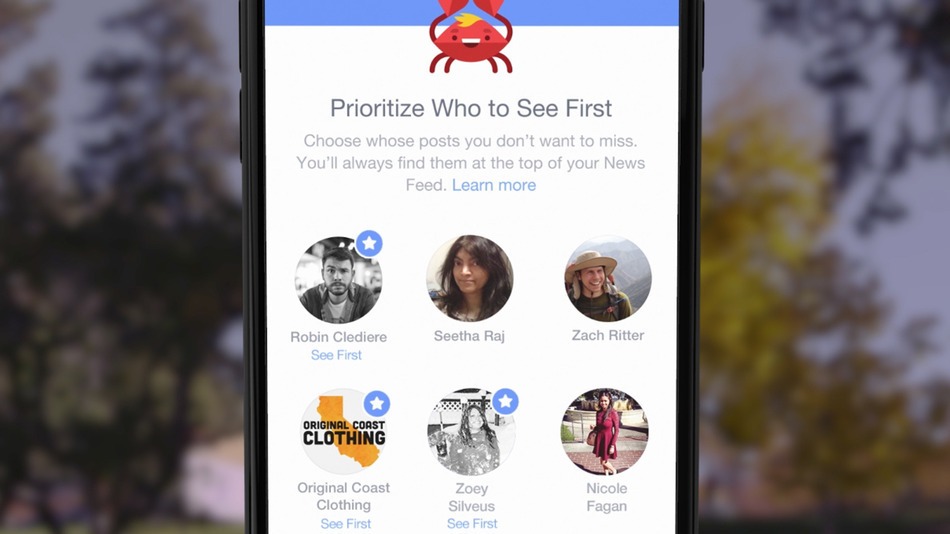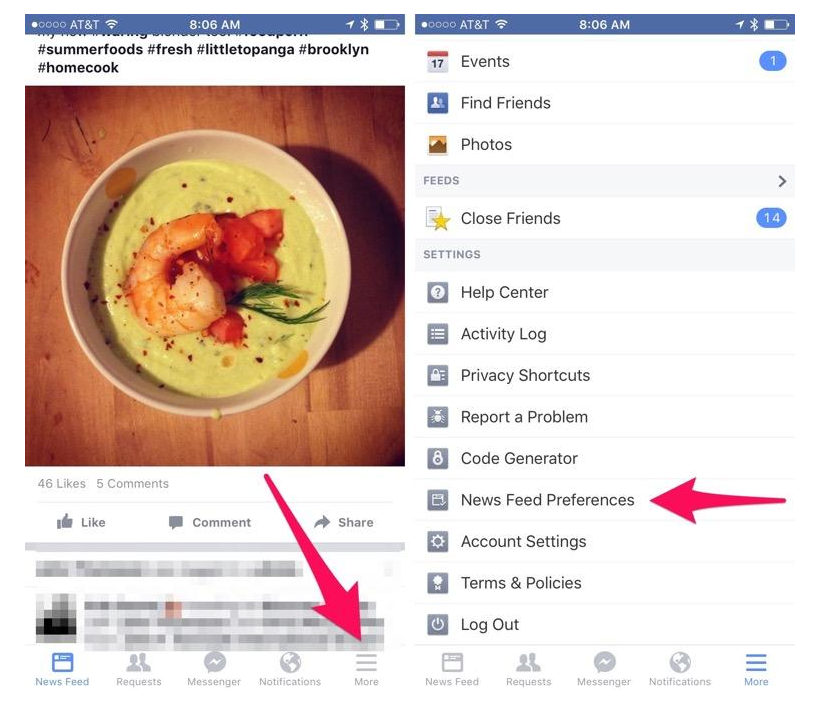Last week, Facebook unveiled a new feature called “See First” which lets users determine whose feed among their friends should be shown at the top of their news feed.
Right now, it is only available on iOS devices but will be released for Android and desktop soon.
To activate it, here are the steps, as curated by CNET:
First, launch the Facebook app on your iOS device, then tap on the More button in the bottom-right corner. Scroll to the bottom of the menu, where you’ll find News Feed Preferences; tap on it.
It will give you a menu of selections, after you pick, names will populate so you can determine whose updates should populate first in your stream. You can also select who to unfollow here. The great part is reconnecting with those you’ve unfollowed in the past or with those whose feeds are buried deep below in your newsfeed.

The Good: You no longer have to miss out on important updates from friends and family members who may have been buried to the bottom of your feed.
The Bad: The function also has implications on news sites. It is good for the most popular ones but bad news for niche, newer and less popular news pages on Facebook. Those pages will not get the opportunity to be seen as much with FB users now self-designating their top choices. The more famous, well-known and established sites will most likely be selected by users. Before, these lesser known sites had a chance of percolating through various users streams even among those no already fans of the page. Those days may be no more.
For example, when you click “Discover new pages”, you are prompted to a list of already popular news sites based on category preferences Facebook’s algorithms have decided you prefer anyway. When we tested it out, only 20 pages came up and the least popular one had 24,000 fans and the most popular one had 7 million.
The Ugly: Those sites that pay for their pages or posts to be boosted will be shifted down below the “See First” posts, thus making their investment less valuable. It’s been discussed, researched and shown before that users rarely read too far down their feed before getting distracted or getting off of Facebook.
In the end, this all appears to be a delicate balance between user control and satisfying the ad buyers who pay to get their pages, posts, content and products before Facebook’s massive billion users.
Oy!
h/t CNET
photo: Mashable


